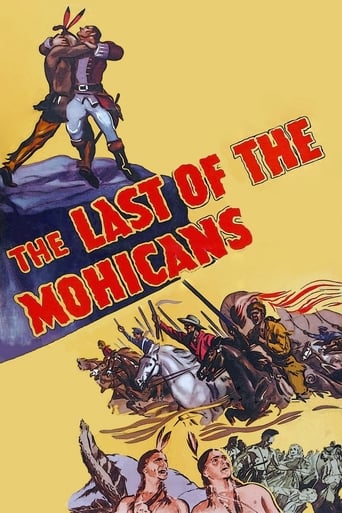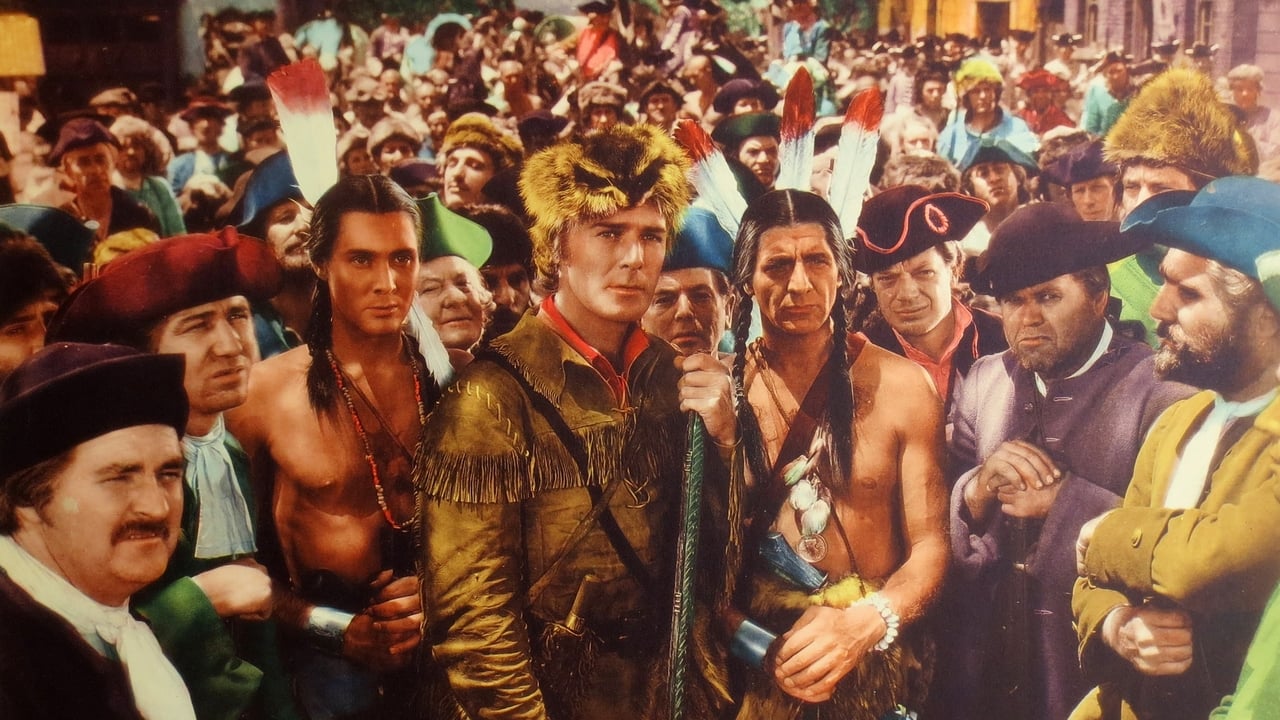jjnxn-1
For fans of the Daniel Day Lewis version of this story this will seem like a rough draft of that film. It's obvious that the makers of the later version relied on this as a springboard and to be fair to this one it's limited by both budgetary and film making techniques of the time. The addition of color, location filming and advanced techniques lend a kinetic edge to the newer version that this one can't match. On it's own it's got some pleasures but many of the performances are stiff, especially Randolph Scott who seems flat particularly when held up against Day Lewis's work. That may be an unfair comparison since few are as skillful as he and Scott was hardly the most naturalistic actor. It's not a bad blueprint but the Michael Mann remake is superior in every way.
azcowboysingr
There have been many films/TV shows made from the Cooper novel, but only 2 really stand out as movies I never tire of watching. This 1936 version, starring Randolph Scott, is one of them. While lacking the majestic beauty of panoramic cinematography that the 1992 version has, it tells the story straight out, with great acting from Randy Scott & his supporting cast. Scott, always the stalwart hero, was never better than as Hawkeye. The director cut no corners, giving the actors whatever they required to make their characters living, breathing, people rather than just cardboard stereotypes as many Hollywood productions did in those early days of sound film. The B/W photography, rather than detracting, actually gives the film a certain historical aspect, as if we are watching a real event through the binoculars of time. I whole-heartedly encourage anyone who hasn't suffered terminal "brain-rot" from the modern crop of "hack-em & slash-em", drugs, sex & rock music, movies, to add this one to their collection of really excellent films!
railyard
Although I have never read the book, I have seen several movies about "The Last of the Mohicans" including those that starred Harry Carey, Michael O'Shea (Buster Crabbe as Magua), Steve Forest, Daniel Day-Lewis, and Randolph Scott as Hawkeye (Nathaniel). Also the TV program starring ex-Lone Ranger, John Hart. For me the number one is Randolph Scott. I'm not saying that the others aren't good, but he is my idea of a clean cut, all American hero whom I'd like to have as a friend especially in time of danger. Actor for actor, the 1936 version has the best cast. Nobody is better than Bruce Cabot as Magua and Robert Barrat is the greatest Chingachgook of all, even though neither one is a real Indian. The final fight to the death between the two of them is far superior than that of any other version and Barrat's homage to his dead son Uncas (Phillip Reed) brings me to tears. There is room for all of these versions, and if you can, watch all of them and pick your own favorite.
dinky-4
Two movies about early-frontier America were released in the autumn of 1936: "The Last of the Mohicans" with Randolph Scott and "Daniel Boone" with George O'Brien. Both were set in the years just prior to the American Revolution, both had Heather Angel in the cast, and both featured a romantic triangle involving a coonskin-capped frontiersman and a powdered-wigged dandy in love with the same woman. Though well over 65 years old, both movies still play well today for any audience that doesn't instantly recoil at the sight of, ugh!, black-and-white cinematography.Curiously, both movies have a scene in which the leading man is tied to a stake in an Indian village so that he can be burned alive. There are several similarities in these scenes -- both men appear bare-chested, for example -- but it's the differences in the scenes which are intriguing.Basically, the burning-at-the-stake scene in "Daniel Boone" is a masculine scene whereas that in "Mohicans" is a feminine scene. In "Daniel Boone," George O'Brien has a tough, virile look with scrappy hair and a tanned, sweaty torso. He wears his pants low enough to show off his navel. He doesn't go to the stake willingly and when the fire is lit, he struggles and kicks and squirms to avoid the flames.Randolph Scott, on the other hand, has a pale look to his skin and he never seems to sweat. He wears his pants high enough to cover his navel and his hair has been styled with marcel waves. He goes to the stake as a willing sacrifice and he never struggles against his bonds. Close-up shots of his face show him with the resigned, masochistic expression of a martyr in a medieval icon.Which scene is better? Probably that in "Daniel Boone" but it's largely a matter of taste. In both scenes, by the way, the leading man displays his manly torso but is allowed to keep his pants on. Apparently those Indians were big on agonizing tortures so long as they were conducted with proper modesty.Finally, note the rawhide straps which cross Randolph Scott's chest in "Mohicans." When first seen, they're positioned below his nipples but during the course of his ordeal they somehow manage to creep up his torso.(For the record, this scene of "Hawkeye" being tortured does not occur in James Fenimore's Cooper novel.)



 AD
AD



